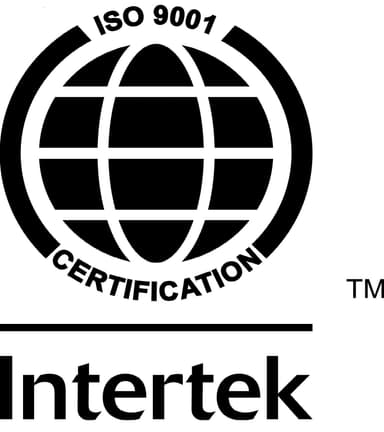Your bathroom is supposed to be a private sanctuary. So when you discover that you’ve accidentally blocked the toilet, it can feel a little awkward asking for help to sort it out.
Fortunately, with the following guide to unblocking your toilet you can save yourself any potential embarrassment by having a go.
First of all turn off the water to the toilet
To reduce the risk of flooding, you should stop the supply of water to the toilet. This is easy to do by accessing the toilet ‘flapper’ in the cistern tank and closing it.
If you have trouble finding the flapper, it basically looks like a drain stopper with a chain attached. You can use gloves to access the toilet flapper, but don’t worry - the water should be clean.
If you can’t find the toilet flapper, you can just turn off the water supply to the property via your stopcock. Just make sure everyone is aware that there will be no water supply until you’re finished unblocking the toilet.
How to unblock a toilet with a plunger
- A toilet plunger (they are larger than a sink plunger)
- A pair of rubber gloves (ideally longer gloves that reach to your elbows)
- Old towels or newspaper to catch any spilt water
- Ventilation via a window or fan (or a face mask to avoid any unpleasant odours)
1. Get yourself prepared
2. Check the cistern tank
First of all, you need to perform a check to see where the blockage might be. Start by removing the cover from your toilet cistern (the unit behind your toilet) to see if it contains any water.
If the cistern does contain water then it’s fair to say that the blockage is located deep inside the waste pipe. This means you’ll need to use the plunger to get the job done. If the plunger doesn’t do the trick you may need to call a plumber to inspect your waste pipe.
If, however, the cistern is empty then we know that the blockage is located between the waste pipe and the toilet itself. This means that trying some other methods if the plunger is unsuccessful.
3. Grab the plunger
How to unblock a toilet without a plunger
The following methods can be used instead of a plunger. For the chemical options, please only try one of the suggestions, as mixing different chemicals can be dangerous. Also, remember to wash your hands afterwards or use the protective rubber gloves.
1. Use a drain rod/auger (or a DIY version)
Essentially, you’re going to try to dislodge the blockage by threading something down the toilet. A drain rod or auger is ideal for this, but you can also use an unwound metal clothes hanger or net curtain wire. Take care when using any of the above items - particularly the metal coat hanger - as it’s easy to scratch your toilet.
2. Unblocking your toilet using an enzyme
Speak to your local hardware store about purchasing a waste removal product that contains enzymes. These enzymes are often used in commercial septic systems to liquefy organic waste materials. As an added bonus, an enzyme product is far less harmful to the environment than chemical-based drain cleaners. Just bear in mind that this product will only be effective against organic materials.
3. Unblocking your toilet using washing up liquid
This method is especially effective against blocked toilet paper. You’ll need a bottle of regular household washing up liquid and a bucket of water. Start by squeezing in about half a bottle of the washing up liquid, which will then sink to the bottom of the toilet bowl. Next, pour in the bucket of water to flush the washing up liquid down the u-bend. With a bit of luck, this will clear the blockage.
4. Unblocking the toilet using soda crystals and vinegar
The combination of soda crystals and white vinegar is a great way to dissolve blockages, and best of all, you’ve probably already got them in your cupboards. All you need to do is pop a handful of the crystals down your toilet and follow it with a cup of white wine vinegar. Give it a few minutes to work its magic then carefully pour a kettle full of boiling water down the toilet.
5. Baking soda and vinegar
This is very similar to the above method, except you’re going to premix four tablespoons of baking soda and white vinegar in a cup first. As soon as the mixture starts to fizz in the cup, pour it down the toilet and let it work on the blockage for about five minutes. If a subsequent flush doesn’t clear the toilet, try repeating again with more baking soda.
6. Washing powder (biological)
One great thing about using washing powder is that even if it doesn’t work, your toilet is going to smell fresh! All you need to do is pour about two handfuls of washing powder down the toilet and then chase it down with a kettle full of boiling hot water.
7. Use a wet-dry vacuum cleaner
If you can borrow a wet-dry vacuum (a vacuum specifically designed to handle water) it’s well worth giving it try on your toilet. First, use the vacuum to drain the water from the toilet bowl and dispose of the water. Next, push the hose of the vacuum down the toilet and into the u-bend. Finally, seal up the toilet bowl around the vacuum tube using a towel to create a seal. With luck, the vacuum will be able to pull the blockage free.
Household items that can double up as a plunger
1. Using a mop to unblock your toilet
Cover the end of your mop with two plastic bags and seal them up using an elastic band or sellotape. Use the mop just as you would a normal plunger with firm, vigorous plunges until you dislodge the blockage.
Please bear in mind it may take longer using the mop as the vacuum seal created by the mop won’t be as efficient as a plunger. Also, don’t forget to remove the carrier bags and dispose of them in the bin!
2. Using a toilet brush to unblock your toilet
Cover the end of your toilet brush with a plastic bag and tie off with an elastic band or sellotape to create a seal. Use the toilet brush as you would a plunger with vigorous pumps until you dislodge the blockage.
As with the mop method above, your toilet brush will not be as efficient as a regular plunger, so you could be plunging for several minutes before you get results. Always remember to remove the bag and dispose of it afterwards.
What to do if you can’t unblock your toilet?
If all else fails, it may be time to call the plumber. You shouldn’t worry about being embarrassed, as most plumbers have seen and experienced far worse. Also, your plumber might be able to catch a deeper issue before it gets much worse, such as a tree root growing into your waste pipe outside.
Common causes of a blocked toilet
Excessive use of toilet paper in a single flush is the main cause of blocked toilets. Try to cut down on the amount of toilet paper you use, or at the very least, flush the paper over several flushes. You should also avoid flushing the following down your toilet:
-
Nappies
-
Sanitary products
-
Cotton wool and cotton buds
-
Cigarettes and cigarette ash
-
Paper, plastic and cardboard (including straws)
-
Large quantities of fat (such as chip fat)
Remember, it’s far better to prevent these issues from happening in the first place rather than having to solve them later on down the line.





